Unlike traditional ocean cruises, which often feel like floating resorts, river cruises in Asia offer an intimate window into local culture, customs and daily life. The pace is slower and more thoughtful, bringing you to the doorstep of ancient temples, quiet villages and bustling markets — no long bus transfers required.
It’s also a stress-free way to explore countries like Vietnam, India, China, Cambodia and Laos, where English isn’t widely spoken. Not only do you get to call a floating boutique hotel home for the duration (and only unpack your suitcase once), but nearly all Asian river cruises include excursions led by local English-speaking guides who vividly bring centuries of history and culture to life.
Curious about setting sail yourself? Here’s everything you need to know to plan the ultimate river cruise in Asia.
Why choose a river cruise in Asia?
Asia’s rivers are among the most captivating in the world, winding through the heart of ancient cities, sacred temples and tranquil countrysides.
Whether it’s the spiritual banks of the Ganges in India, the limestone karsts of northern Vietnam or the quiet rural stretches of China, river cruising offers access to under-the-radar places — all from the comfort of a small ship, typically carrying fewer than 70 guests.
It’s a window into an unfiltered, culturally rich Asia. One moment you’re gliding past golden temples at sunset; the next, you’re watching saffron-robed monks receive alms at dawn. Along these storied waterways, life unfolds in ways that feel both timeless and deeply personal.
Where should I river cruise in Asia?
Vietnam and Cambodia
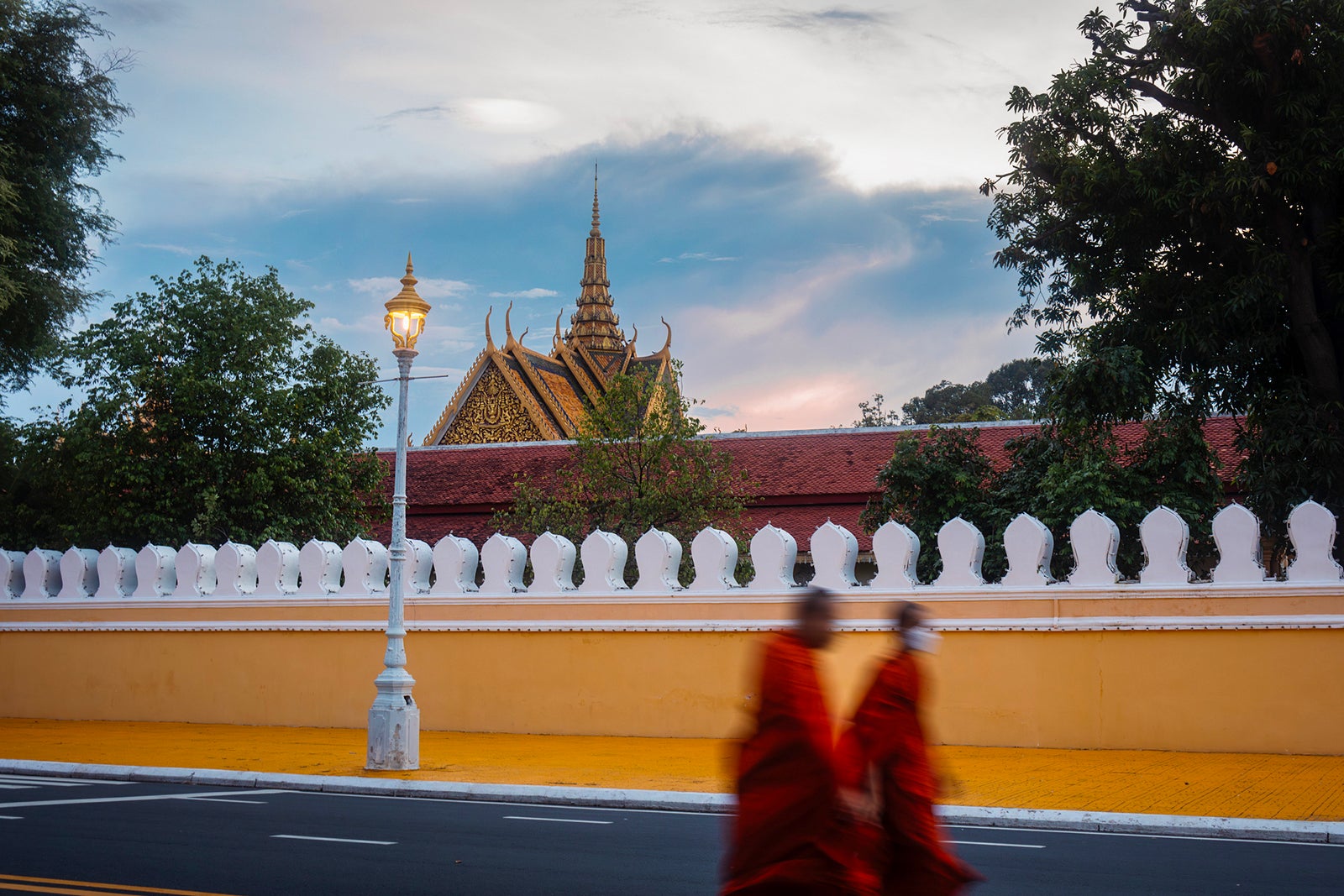
The Mekong River is the heavyweight of Asia’s river cruise scene, a lifeline flowing from China through Laos and into Vietnam and Cambodia. Most cruises explore the lower Mekong, sailing between Ho Chi Minh City in Vietnam and Phnom Penh, Cambodia, making stops at stilt villages, silk workshops and intricately carved pagodas along the way. They also offer the chance to visit the Khmer Rouge’s brutal Killing Fields — a sobering but important historic site. Some cruise lines, like Scenic Cruises and Avalon Waterways, continue to Siem Reap, Cambodia, where a sunrise visit to the majestic temple complex of Angkor Wat is a standout activity.
During Cambodia’s high-water season in October, both Pandaw and Aqua Expeditions detour to Tonle Sap, an inland lake that floods beneath the stilted homes of floating villages; they also sail onto Kratie for rare sightings of Irrawaddy dolphins.
Less traveled than the Mekong, Vietnam’s Red River (also known as the Hong River) flows through the heart of the north. Most cruises depart from Hanoi and trade the Mekong delta’s bustle for mist-shrouded limestone karsts in Ha Long Bay. They also sail to tranquil farming villages farther north, where daily life moves at a gentler rhythm.

Reward your inbox with the TPG Daily newsletter
Join over 700,000 readers for breaking news, in-depth guides and exclusive deals from TPG’s experts
India
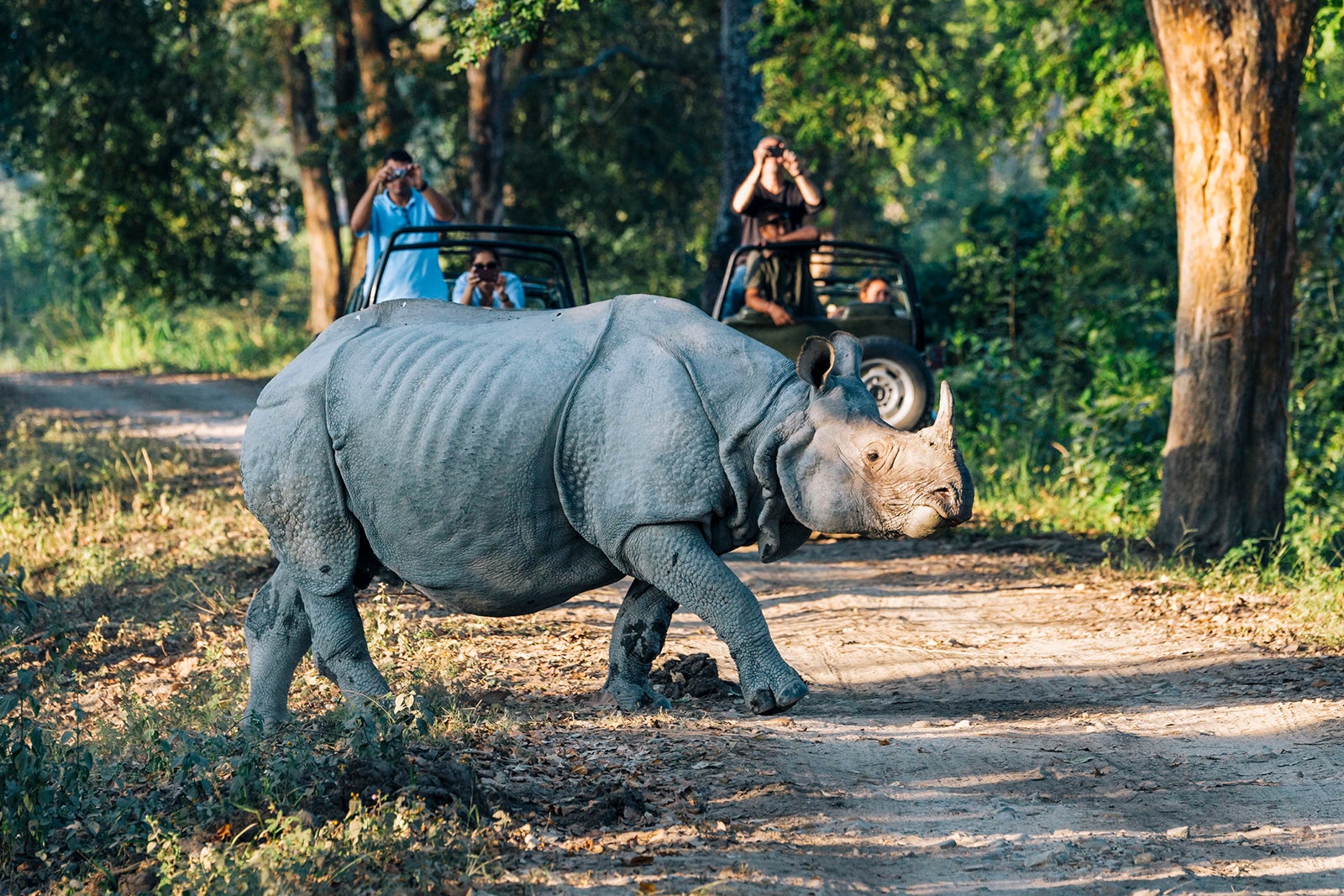
In India, river cruising is like stepping back in time. On the Ganges River, particularly the stretch between Kolkata and Varanasi, you’ll witness the heart of northern India: sunrise ceremonies on the ghats (riverfront steps), riverside temples, mango orchards and the remains of colonial-era outposts.
Farther northeast, the Brahmaputra River winds through Assam, where the Himalayas are never far from view. Here, jungle-cloaked tea plantations give way to tribal villages, teak forests and wildlife safaris in Kaziranga National Park, home to the endangered one-horned rhinoceros. Because the Brahmaputra can be unpredictable, cruises here are best for those seeking off-the-beaten-path adventure.
Kerala, in the south, is just beginning to open to luxury river cruises thanks to Pandaw; the river offers languid backwaters, dreamy beaches and fewer crowds than in the north.
China
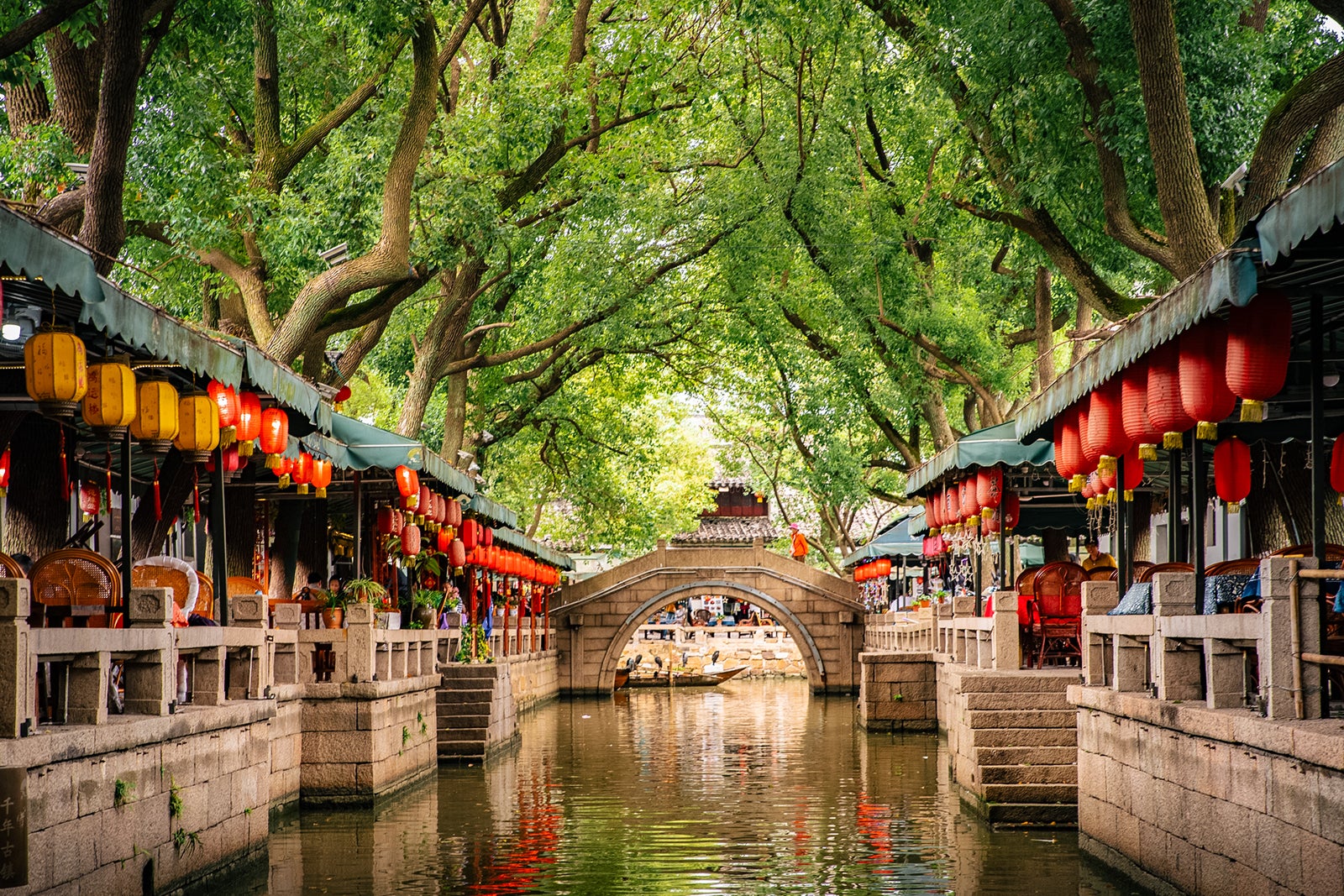
China’s Yangtze River is monumental, both in scale and significance. A cruise here is as much about modern engineering as ancient history. Cruises sail through the legendary Three Gorges, past mist-wrapped cliffs and hillside temples, before arriving at the colossal Three Gorges Dam — one of the world’s largest feats of hydroelectric engineering. Shore excursions might include visits to ancient stilt villages, local markets or imperial tombs. Onboard life offers a front-row seat to China’s rapid transformation, framed by landscapes that have inspired poets for millennia.
Myanmar
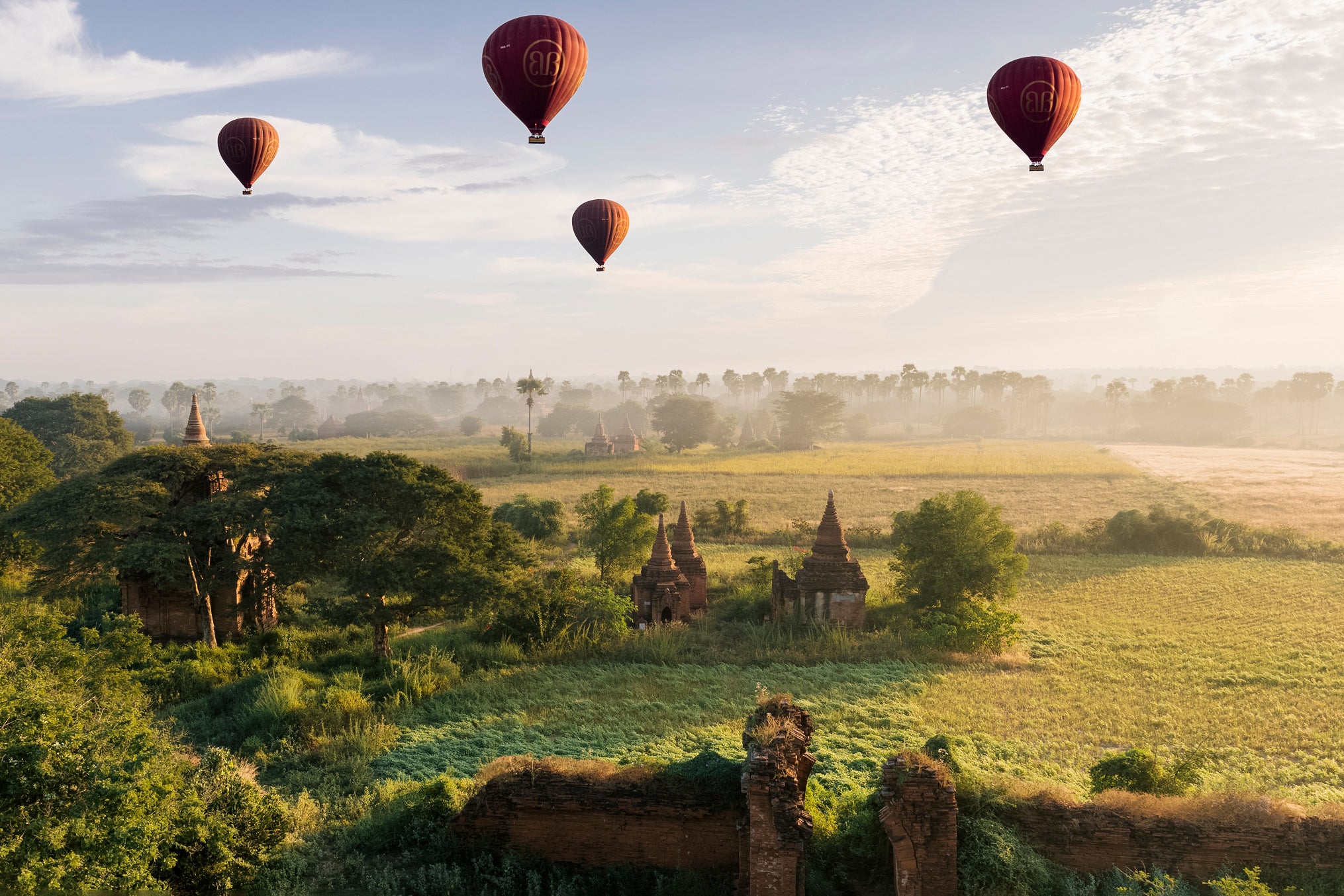
Myanmar was once a rising star on the cruise scene, but political unrest has paused most river cruising there for now.
Which river should I cruise?
It depends on what kind of scenery and vibe you’re looking for.
A cruise along the Mekong River is a vibrant tapestry of morning markets, incense-filled temples and lively riverbanks. The Yangtze, by contrast, is all about scale: vast engineering feats like the Three Gorges Dam, misty cliffs and ancient cliffside carvings.
In India, the Ganges delivers a spiritual journey through cities like Varanasi, where rituals unfold on the ghats at sunrise. Farther north, the Brahmaputra offers something wilder, with everything from elephant safaris to views of the Himalayan foothills. In South India, Kerala’s backwaters are a slow-paced journey through palm-lined canals and vibrant village life — all with the chance to sample fragrant, seafood-rich cuisine.
What should I expect on board?
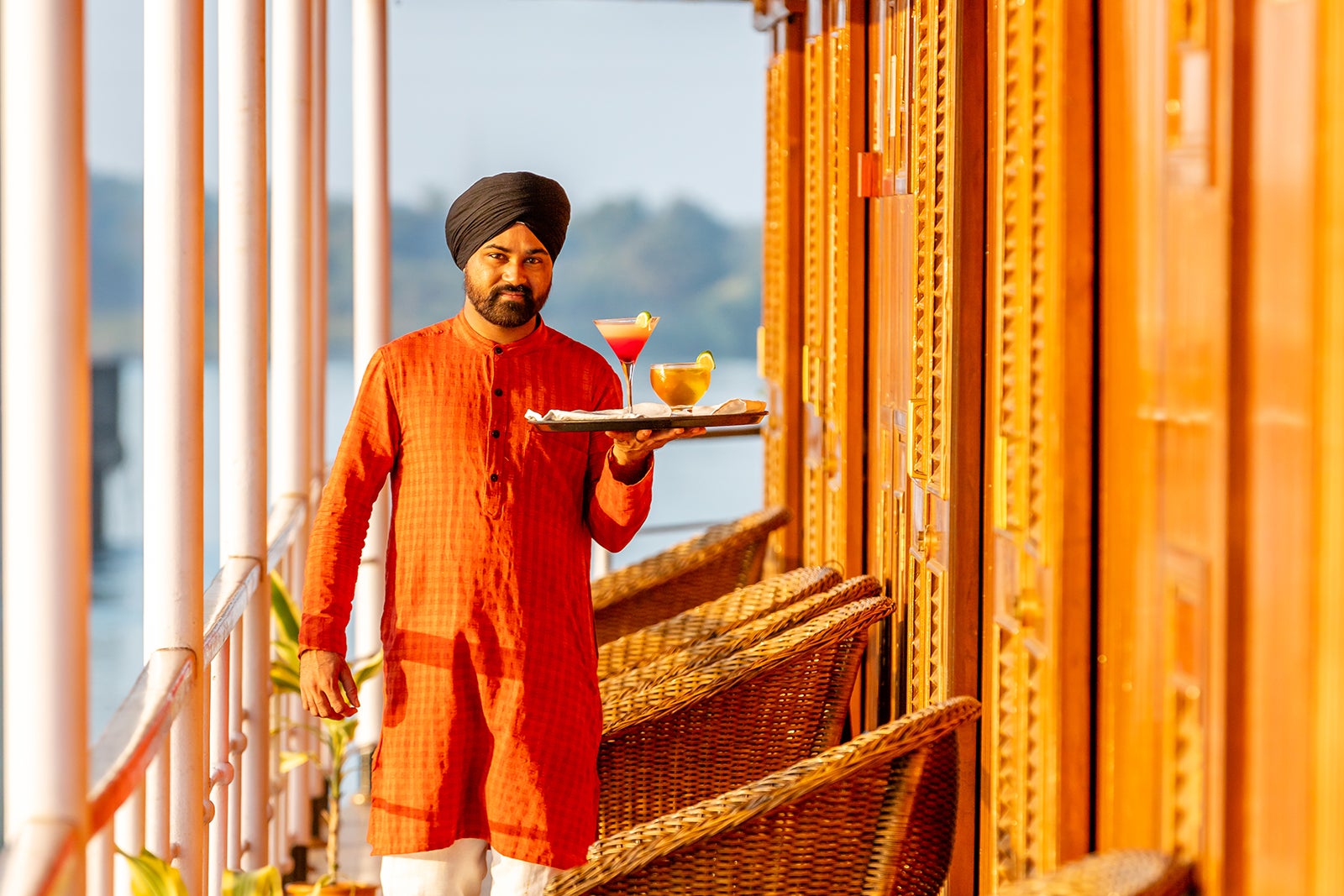
Most river cruises in Asia operate on small, boutique vessels that typically accommodate only 20 to 60 passengers. These boats are intimate and built for comfort, with stylish cabins, open-air decks and onboard dining that celebrates local flavors. Some even feature spas, pools and daily yoga classes. English-speaking guides lead daily excursions that might include visits to palaces, museums, villages, temples and cultural performances. Back on board, you might enjoy cooking demonstrations and traditional dance shows. Or, you might simply want to watch life glide by from a deck chair.
When is the best time to go?
The best weather in southern Asia generally falls during autumn and spring — from September to November and from March to May. This is the dry season, when temperatures are milder, humidity is lower and landscapes are blooming with seasonal color. There are fewer crowds and fewer mosquitoes.
Cruises in northern India are the exception: the ideal time to sail here is during the cooler, drier months of October through March.
Which lines cruise rivers in Asia?
Mekong River (Cambodia, Vietnam and Laos)
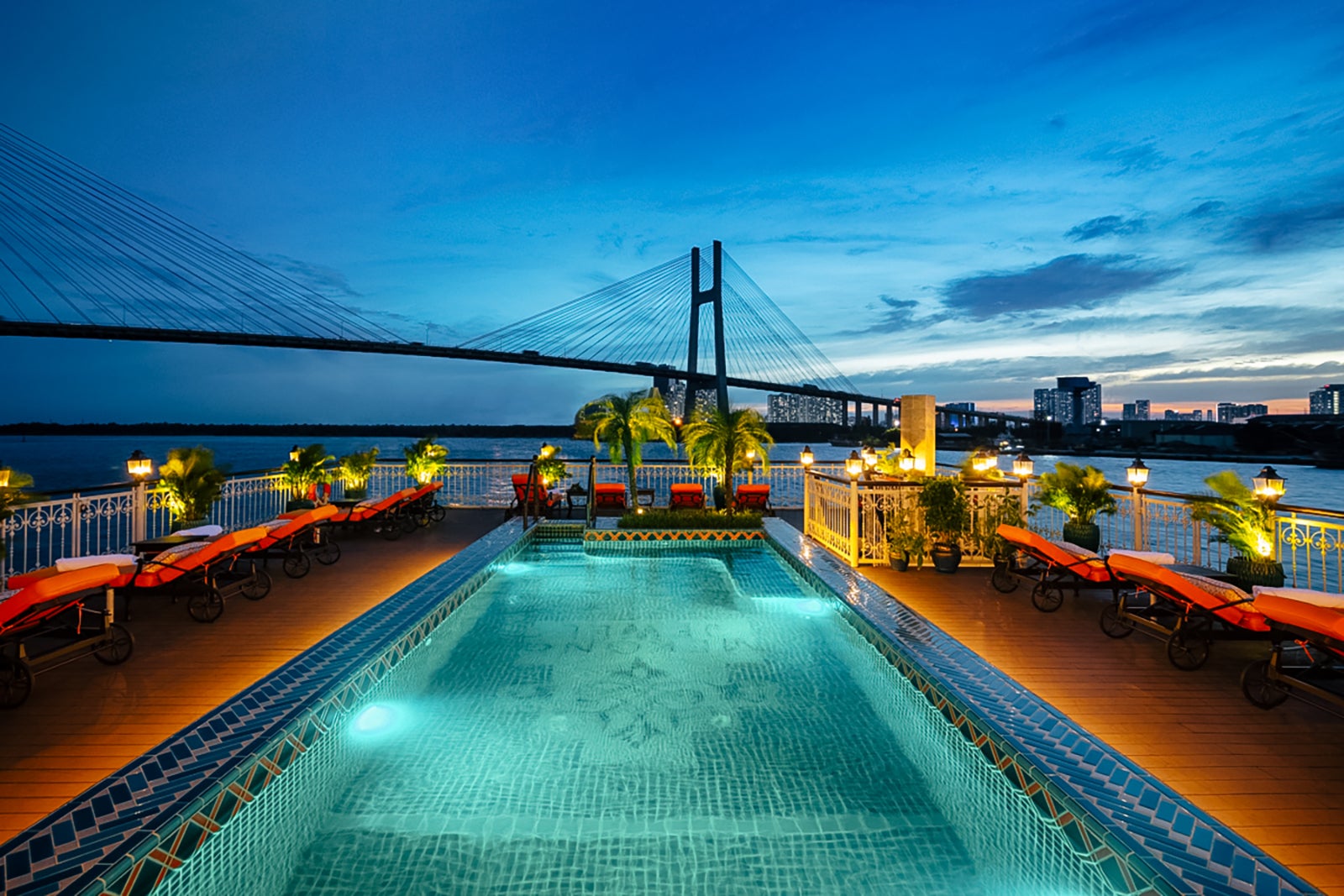
The Mekong is often the go-to path for travelers exploring Southeast Asia by river. Seven-night itineraries typically wind through Vietnam and Cambodia, with select sailings extending into Laos.
When it comes to cruising the Mekong, there’s no shortage of choice — from expedition-style adventures to indulgent floating hotels. Operators include:
- AmaWaterways
- Aqua Expeditions
- Avalon Waterways
- CroisiEurope Cruises
- Emerald Cruises
- Pandaw
- Scenic Luxury Cruises
- Uniworld Boutique River Cruises
- Viking
At the luxury end, Aqua Expeditions leads the pack with the Aqua Mekong, a sleek teak-and-glass vessel offering exceptional service, refined cuisine, and guided excursions led by expert naturalists and historians. Uniworld and Scenic also bring a lavish, all-inclusive touch, with opulent interiors and curated daily tours.
AmaWaterways, Viking and Avalon deliver a more classic river cruise experience — comfortable, polished and tailored to North American tastes. Pandaw offers something more atmospheric and immersive, with teak boats and deep regional expertise as one of Asia’s most established operators. For a more budget-friendly alternative, France-based CroisiEurope and Emerald Cruises cover the cultural essentials — from floating markets to remote riverside villages — without skimping on charm.
Red River and Ha Long Bay
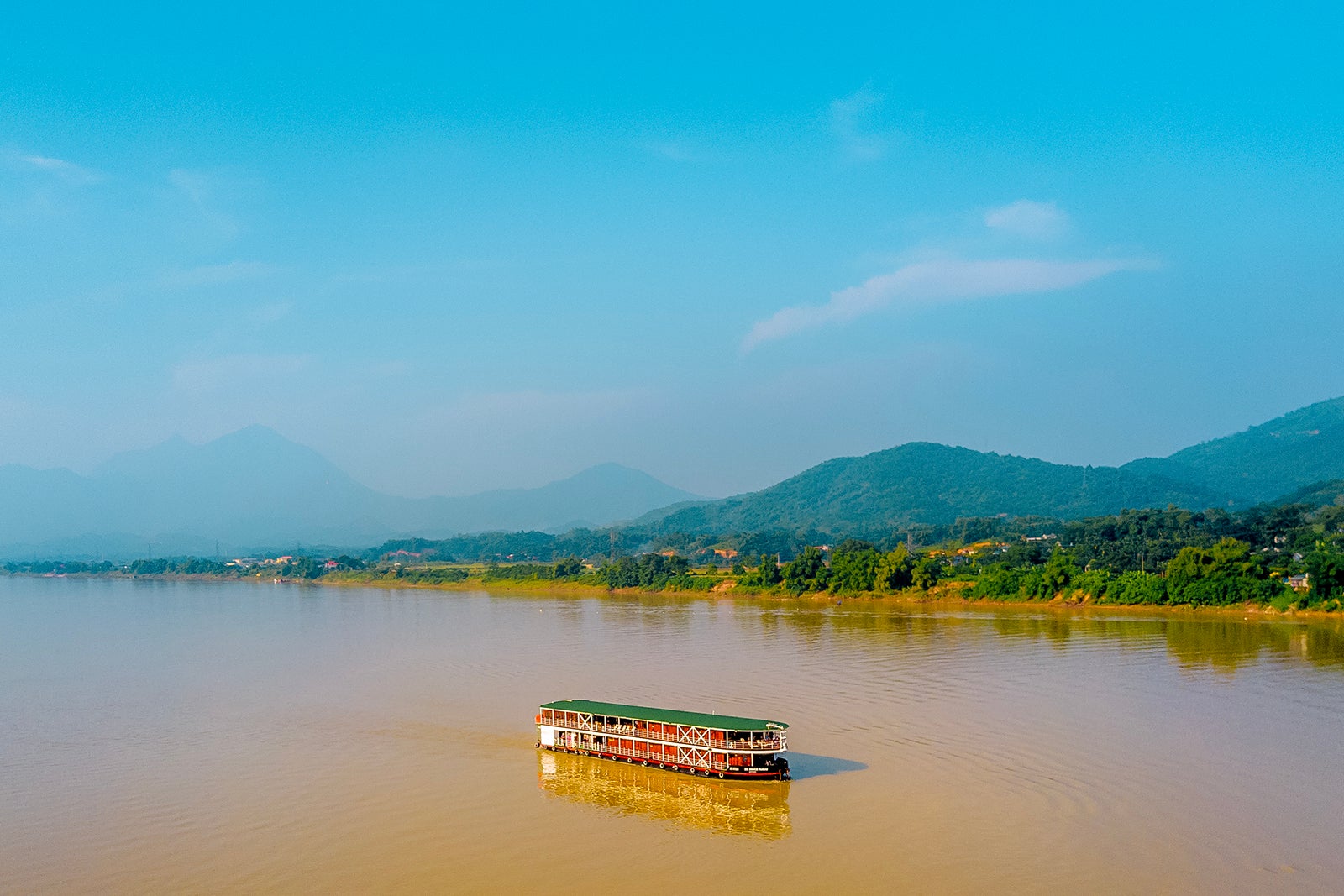
For a more off-the-beaten-path river cruise, Vietnam’s Red River offers a richly rewarding alternative to the Mekong. Pandaw is currently the only line sailing this route, with itineraries beginning amid the otherworldly ambiance of Ha Long Bay — a dramatic UNESCO World Heritage Site. By 2026, Pandaw will further expand its presence with two shallow-draft ships navigating into the heart of northern Vietnam, stopping at rarely visited villages along the Red River.
Avalon Waterways also offers two-night Ha Long Bay extensions as part of its longer land-and-river journeys, giving guests a chance to experience the bay’s ethereal beauty before or after a Mekong sailing.
Ganges and Brahmaputra rivers and the Kerala backwaters
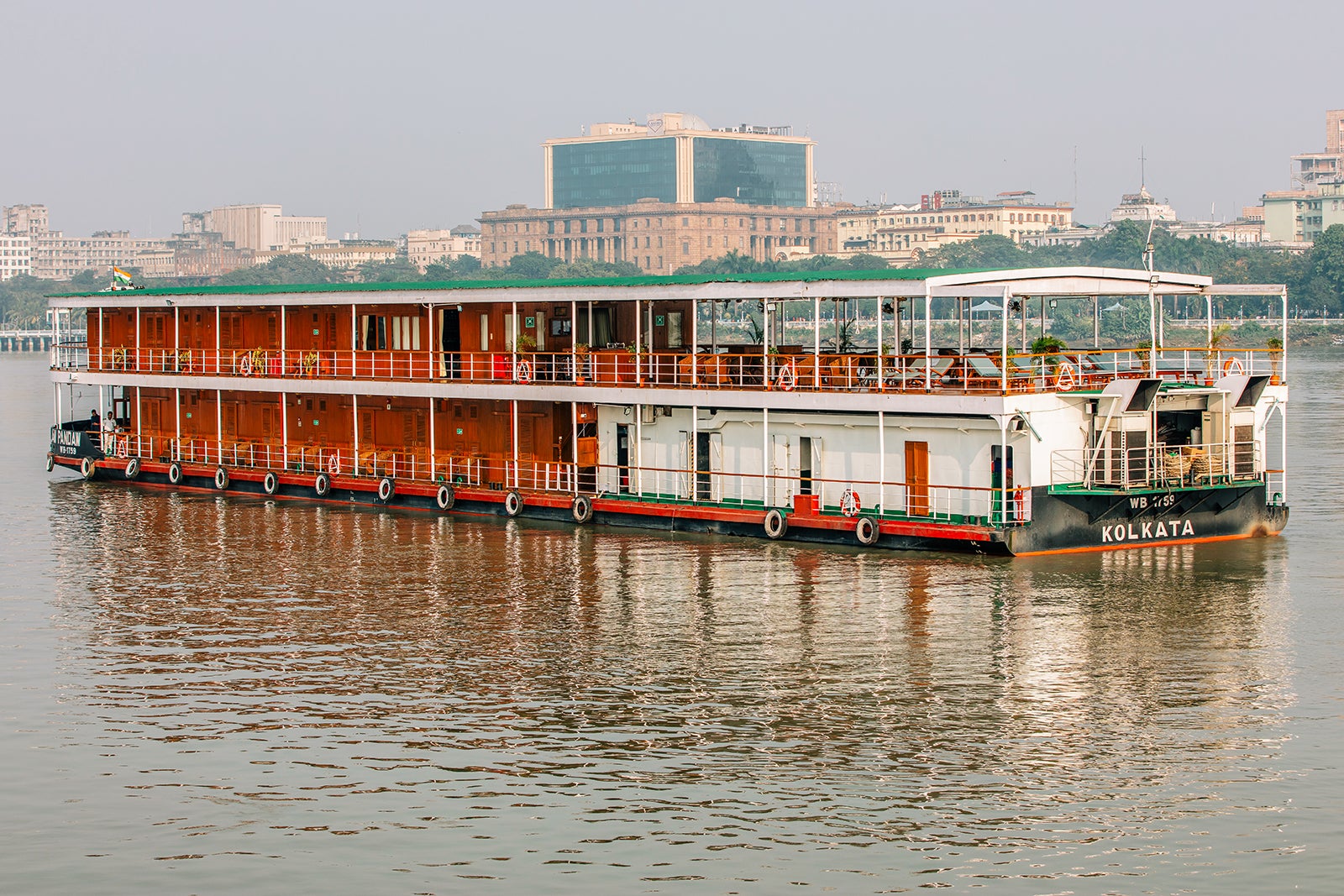
Pandaw Cruises dominate India’s rivers, with small luxury ships built for shallow waters. Its open-deck teak vessels sail the Ganges, the wildlife-rich Brahmaputra and (new to the line) the tranquil Kerala backwaters — offering the most comprehensive coverage in the region.
Uniworld is the only international luxury river cruise line operating on the Ganges, bringing its signature all-inclusive service, lavish interiors and curated excursions to one of India’s most spiritual waterways.
Yangtze River
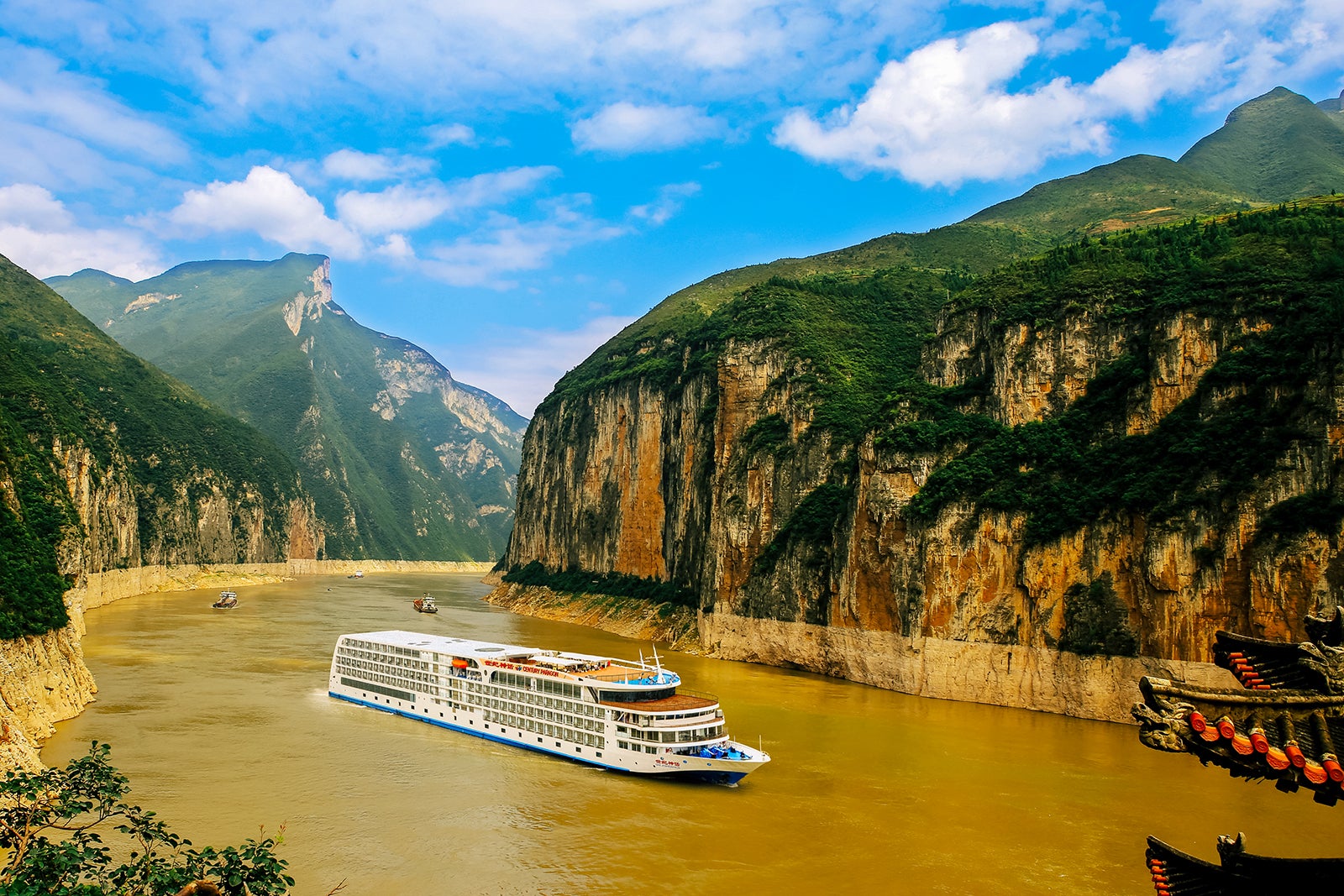
China’s Century Cruises leads the way on the Yangtze, with more than 30 years of experience. Its newest fleet of eco-friendly luxury ships — including Century Glory, Century Victory, Century Oasis and Century Voyage — combine heritage highlights with seamless service.
Victoria Cruise Lines is another major player on this route.
How long is a river cruise?
Most Mekong River cruises run between seven and 10 days, often with the option to add a pre- or post-cruise land tour in cities like Ho Chi Minh City or Hanoi, Vietnam, or Siem Reap, Cambodia. AmaWaterways offers an eight-day Charms of the Mekong itinerary between Ho Chi Minh City and Phnom Penh; meanwhile, Viking’s Magnificent Mekong journey pairs an eight-day river cruise aboard its new ship, the Viking Tonle, with guided land stays in Hanoi, Siem Reap and Ho Chi Minh City.
Yangtze River cruises in China are typically longer, often two weeks or more, and they include overland travel to major cities such as Beijing, Xi’an or Shanghai.
Bottom line
When it comes to Asia, start with the iconic Mekong, Ganges and Yangtze rivers for rich culture, unforgettable scenery and immersive history. But don’t stop there. River cruising in Asia isn’t just about where you go — it’s how you experience it. And there’s always more to discover beyond the well-trodden routes.
Source link

















Add Comment